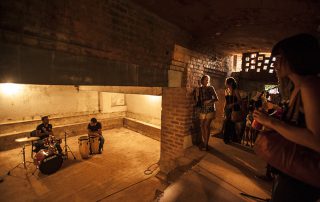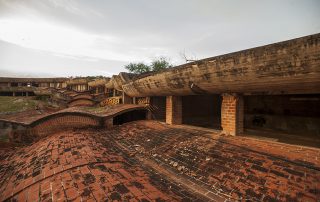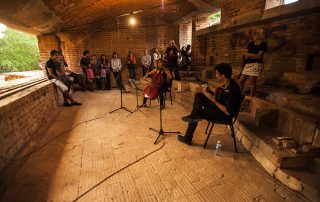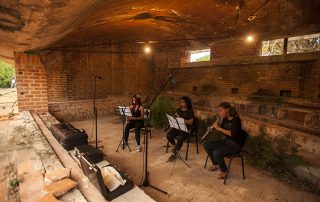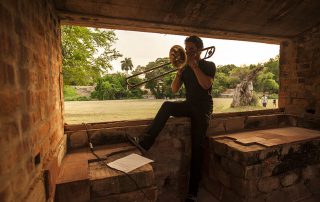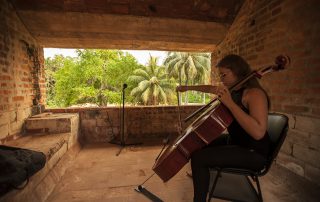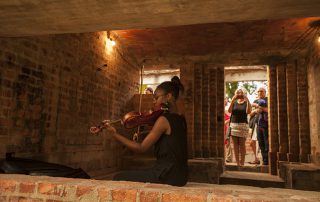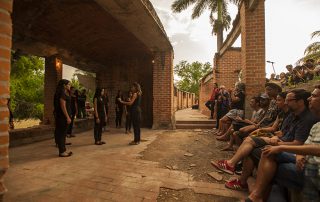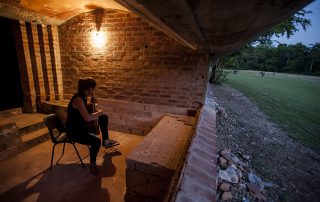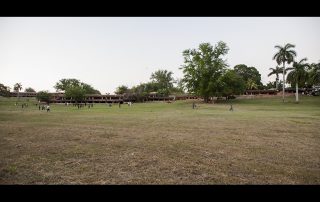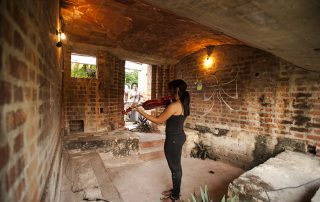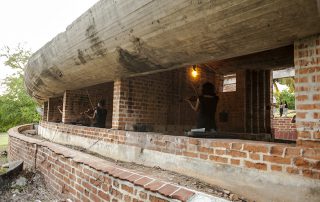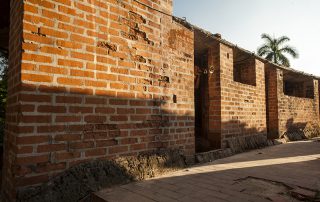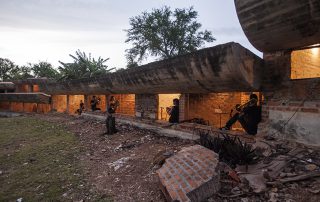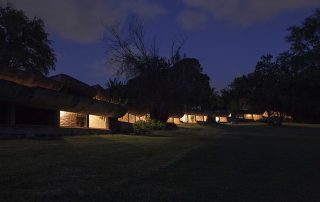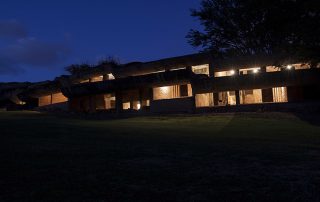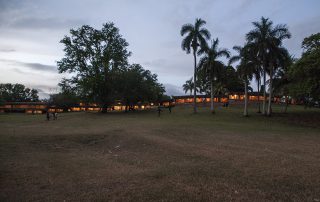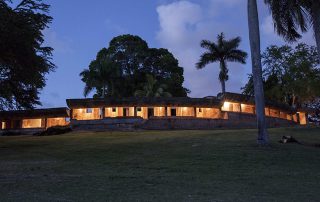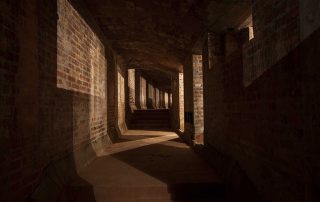An essay on flowSound and light intervention at the Music School building (El Gusano),architectural project by Vittorio Garatti.
Universidad de las Artes (ISA), Havana, Cuba.
- 70 Musicians (stringed,wind,voices and percussions)
- Illumination (lamps, sockets, electrical cable. plugins)
In collaboration with the cuban compositor Wilma Alba
12 Havana Biennial
Between the idea and the experience.
If a simile was to be identified for the Cuban Revolution, the art school complex located in the neighborhood of Cubanacan, Havana, would qualify as a highly effective match. Can there be a more lyrical way to pursue social equality than building a campus, and not just any campus, but an art school, on a golf course? Its existing architecture has reflected the ongoing changes pursued by the Cuban people after 1959: in spite of challenging conditions, some of its buildings, as those designed by Ricardo Porro, have continued to meet their original purpose; that of Roberto Gottardi, inexplicably, works; and while subjected to absolute and incomprehensible neglect, the facilities laid out by Vittorio Garatti still preserve the spirit and poetry that first encouraged this beautiful project. Maybe for these reasons, the old National Art School has become an inspiring muse for Cuban and foreign artists.
By applying their respective poetic skills, various artists have proposed to metaphorically restore some of the functions of this complex, which had been lost or have existed only in concept. The project that Mexican artist Hector Zamora is developing in within the framework of the 12th Havana Biennial is part of this dynamic effort. On May 21 through 25, 2015, the Garatti School of Music will host an orchestra that had never been able to play there. The audience must be warned, however, that it will witness, not just a concert. An entertainment of this nature would not be a fitting tribute to such an innovative architecture of high aesthetic value. The school’™s zigzagging shape is sculptural; and a peculiar work indeed: its site acoustics acts as sounding board for virtually any instrument. Therefore, nothing can play along with the ‘Worm’ (the facility’™s popular designation) better than a sound production.
And the Worm will ‘come to life’ thanks to a piece that has been specifically composed in its honor! Inspired by this facility, Cuban songwriter Wilma Alba Cal embarked on a creative adventure. Produced in cooperation with Hector Zamora, the piece posed a challenge for its composer. On the one hand, its score needed to include melodies that would operate as sort of ‘decoys.’ And on the other, the acoustics and space distributions within the site required that its players (seventy in total) be arranged in unusual positions; otherwise, not all of them would be heard. In other words, the players would be both soloists and absolute owners of their allocated compartments, as well as accompanists and links in a composition that only their auditorium would be able to enjoy. The audience will not only find pleasure, but also its reactions to the sound stimuli will help build the performance.
For her invitation to tour, and in passing, get lost in this sensual and labyrinth-forming edifice, Vilma carefully studied the position to be held by each musician, both as soloist and as a member of a chamber ensemble (exactly the same structure that the Italian architect had designed for the use of individual compartments). At the entrance of the hall, a female choir will usher in the plastic representations. In order to create a ‘warm and homogeneous’ atmosphere, the choir will be followed by strings and winds. Their performance will advance in crescendo; and gradually, other differently formatted strains, arranged in broader segments, will be joining in. In this part, the intention is to provide widely diverse tones, consistently with the surprising twists and turns of the surrounding architecture. This perception of dynamism will be maximized not only by the arrangement of the musicians in the hall, but also their relaxing musical interpretation, with moments of improvisation and greater engagement with the audience, free from the solemnity imposed by their concert hall.
A work of this nature requires a ‘completely new time perception of space;’ accordingly, another resource that could reinforce the organic link between vision and sound was required: lighting. Thoughtfully engineered, the spotlighting setup makes the musicians observable and provides a visual composition that, in its interaction with sound, gives rise to an artistic product. Following the course of his previous works, Hector has poetically contextualized this intervention, and in those terms, he has depicted his view of the transition in progress in the Island.
Finally, the classrooms within the Worm will host not only the natural music of their environment (singing birds, murmuring river and whispering winds through leafy trees) and/or echoing sounds from the distance; but also musicians, whose performance will cause the building to vibrate with energy. Here is an invitation to delight one’™s mind. The chosen ‘scenario’ will also be imposing a performance of multiple meanings. Everything is allowed, except for the flow to stop.
Barbara Beatriz Laffita Menocal
Translated by: tranSmith


